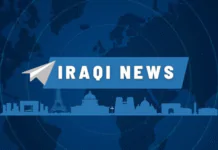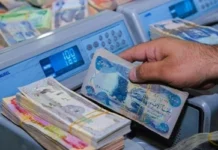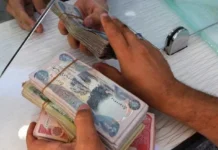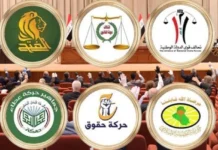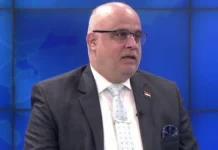Good Afternoon,
BRICS Unveils 200-Denominated Bank Note at 2025 Summit?
A symbolic gesture, not a currency launch—Putin reveals mock BRICS note to stir global conversation on de-dollarization
▪️ A 200-denominated BRICS bank note displayed at SPIEF 2025 has gone viral—but it’s not a real currency.
▪️ The note features national flags and birds of BRICS members, symbolizing unity across geopolitical divides.
▪️ Despite speculation, the bloc remains divided on launching a common currency, especially between China-Russia and India-Brazil factions.
At the 2025 St. Petersburg International Economic Forum (SPIEF), Russian President Vladimir Putin unveiled a symbolic 200-denominated BRICS bank note, igniting another wave of speculation about the future of BRICS monetary cooperation. However, the note is not legal tender, nor does it represent an official step toward a unified BRICS currency.
This follows a similar stunt from the 2024 Kazan Summit, where Putin revealed another mock-up. The note shown this year again featured emblems representing each member state, but it remains purely ceremonial—meant more to signal intent than serve as a functional medium of exchange.
No Common Ground Yet: Divisions Within the BRICS Bloc
While Russia, China, and Iran are pushing hard for a BRICS common currency, other members—including India, Brazil, South Africa, and the UAE—remain cautious or outright opposed. India has been particularly vocal in rejecting the notion, casting doubt on any near-term issuance of a BRICS bank note or reserve currency.
“The bill cannot be taken seriously as it’s not an official currency of the alliance,” the article states, reflecting the fractured consensus among member nations.
Concerns about China’s strategic ambitions are also fueling resistance. Some BRICS nations see the currency push as a tool for Chinese influence, rather than a truly cooperative initiative. Meanwhile, Russia and Iran, under heavy U.S. sanctions, are eager to bypass the dollar and see BRICS as a lifeline for economic sovereignty.
A Symbol of Aspiration—But Not of Monetary Reality
While the mock note has captured global attention, it holds no real monet<!– GAM 71161633/DNARCPS_dinarrecaps/blog_posts_karen –>
<div data-fuse=”23035929188″></div>ary value. It cannot be traded, exchanged, or used in commerce. For now, it serves as a visual symbol of de-dollarization ambitions, rather than a concrete policy step.
Nonetheless, the display underscores the political weight behind the BRICS monetary agenda, even if practical implementation remains distant.
“There is no other option but to rely on other forms of payment than the US dollar,” notes the article, summarizing the urgency for some member states.
What Comes Next?
Until all member states align ideologically, a BRICS reserve currency remains more of a diplomatic tool than an economic reality. But these repeated symbolic gestures—especially from Moscow—signal that de-dollarization remains front and center on the bloc’s agenda.
Whether the 200-denominated note will evolve into a genuine instrument of trade or remain a propaganda image depends on how internal rifts are resolved.
@ Newshounds News™
Source: Watcher.Guru
~~~~~~~~~
Brazilian President Lula Proposes BRICS Develop New Trade Currency
Lula calls for a new settlement mechanism to counter austerity and restore multilateral order
▪️ Brazilian President Luiz Inácio Lula da Silva has renewed calls for the creation of a BRICS trade currency.
▪️ Lula emphasized that while politically complex, a common trade unit is “extremely important” for global balance and humanity’s future.
▪️ The proposal emerged during the 10th annual New Development Bank (NDB) meeting, where Lula pushed for new financing models and monetary independence.
Speaking at the 10th meeting of the New Development Bank, Lula made an emphatic plea to the BRICS bloc to develop a shared trade currency, aiming to disrupt current global settlement systems and reduce dependence on the U.S. dollar. He presented the idea as part of a broader push to combat austerity-driven policies imposed by world powers on emerging and developing economies.
“The debate over the need for a new trade currency is extremely important. It’s complex… but if people don’t find a new formula, the 21st century will end the same way the 20th century began—and that will not be beneficial for humanity.”
Lula’s Vision: Trade, Multilateralism, and Global Equity
In line with his long-standing commitment to multilateralism and free trade, Lula argued that the current system no longer serves the needs of the global South. He called on NDB President Dilma Rousseff to work with international financial institutions to design new financing and monetary alternatives.
Lula also warned that failure to act now could weaken global democracy:
“Multilateralism is facing its worst moment since its inception after World War II,” he noted.
The concept of a BRICS currency is not new, but it has consistently faced resistance—mainly due to political divergence within the bloc. So far, BRICS has instead pursued national currency-based trade settlements as a transitional step.
Global Impact and U.S. Response: A Dollar Under Threat?
The significance of such a currency is not lost on geopolitical actors. Even Donald Trump weighed in late last year, warning that any BRICS nation issuing a new currency or abandoning the U.S. dollar would face punitive tariffs up to 100%.
“They should expect to say goodbye to selling into the wonderful U.S. economy,” Trump threatened, underlining U.S. concern about losing monetary dominance.
This reinforces how the mere possibility of a BRICS trade unit could have major geopolitical and market implications, particularly for U.S. dollar hegemony in international trade.
What Comes Next?
Although Lula’s proposal remains in its early stages, it is gaining traction amid growing dissatisfaction with dollar dependency—especially among sanctioned economies like Russia and Iran, and rising powers like China.
The debate over a common BRICS trade currency is now not just economic—but existential, as it reflects deeper questions about the future of global governance and financial sovereignty.
@ Newshounds News™
Source: Bitcoin.com
~~~~~~~~~
Seeds of Wisdom Team RV Currency Facts Youtube and Rumble
Newshound’s News Telegram Room Link
Follow the Roadmap
Follow the Timeline
Seeds of Wisdom Team™ Website
